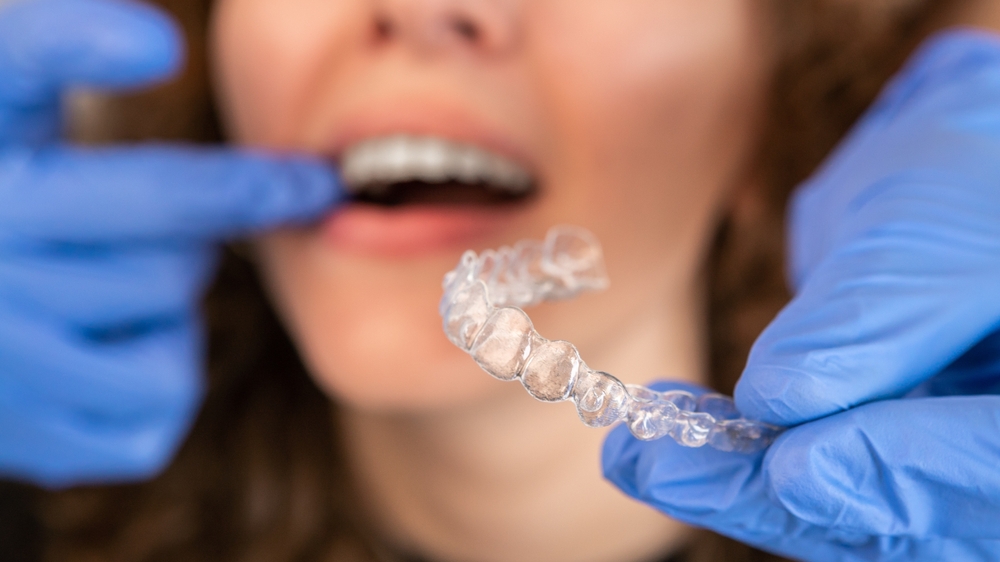Invisalign has transformed the way people straighten their teeth by offering a clear, comfortable, and discreet alternative to traditional metal braces. While many patients are drawn to the convenience and aesthetic appeal of this treatment, some may notice that their Invisalign journey takes longer than expected. What causes these variations in treatment time? The answer lies in several individual factors that influence how quickly teeth can shift into their desired positions. In this blog, we’ll explore the key reasons why Invisalign takes longer for some people than others and what you can do to stay on track for the best possible results.
In This Blog:
- The Complexity of the Dental Case
- Patient Compliance with Aligner Wear
- Age and Bone Density
- The Need for Attachments or Refinements
- Initial Oral Health Condition
- Lifestyle and Habits
- The Experience of the Provider
The Complexity of the Dental Case
One of the most significant factors affecting Invisalign treatment time is the complexity of the patient’s dental issues. Invisalign is highly effective for correcting a wide range of orthodontic problems, but more complicated cases naturally require a longer treatment period.
- Mild vs. Severe Misalignment: Patients with minor crowding or small gaps may complete their treatment in as little as six months. In contrast, those with significant spacing issues or overlapping teeth may need 12 to 18 months or more to achieve full correction.
- Bite Issues: Correcting bite problems such as overbite, underbite, crossbite, or open bite typically extends the duration of Invisalign treatment. These adjustments involve moving not just individual teeth but also the way the upper and lower teeth come together, which can be more time-intensive.
- Tooth Movement Challenges: Certain tooth movements, like rotating a tooth that’s turned sideways or moving teeth vertically (intrusion or extrusion), are more complex and take longer than standard horizontal shifts. Invisalign can address these movements, but they require a carefully staged treatment plan.
The more intricate the dental case, the more time is needed for precise and controlled movements, which explains why some patients reach their results faster than others.
Patient Compliance with Aligner Wear
Invisalign aligners are removable, offering flexibility, but that same convenience can lead to delays if patients aren’t diligent. The success and speed of treatment largely depend on how consistently the aligners are worn.
- Recommended Wear Time: Invisalign must be worn for 20 to 22 hours per day to stay on schedule. That means only removing them for meals, drinks (other than water), and oral hygiene.
- Inconsistent Use: If aligners are removed too often or worn for fewer hours than recommended, teeth may not shift as planned. This can lead to setbacks, requiring the use of the same set of trays for longer or adding more trays later in treatment.
- Lost or Damaged Aligners: Misplacing aligners or accidentally damaging them can pause treatment while replacements are made. Even short breaks in aligner wear can cause teeth to regress slightly, which adds more time to the overall plan.
Patient compliance is one of the most controllable factors in treatment duration. Staying committed to proper wear can significantly shorten the path to a straighter smile.
Age and Bone Density
Age plays a surprising role in how quickly Invisalign can deliver results. While the system is effective for teens and adults alike, the biological response to aligner pressure varies with age.
- Younger Patients: Adolescents and young adults often experience faster tooth movement. This is because their jawbones are still growing and more responsive to orthodontic forces, making aligner-guided adjustments more efficient.
- Older Adults: As people age, bone density increases and becomes less flexible. This natural change in bone structure can slow the movement of teeth during Invisalign treatment. It doesn’t make the treatment less effective, but it can mean a longer timeline.
Even though older patients may require more time, the results are just as achievable. With a carefully managed treatment plan and proper follow-through, Invisalign can deliver excellent outcomes at any age.
The Need for Attachments or Refinements
In some cases, Invisalign treatment requires additional tools and adjustments to guide the teeth more effectively, which can extend the overall timeline.
- Attachments: These are small, tooth-colored buttons bonded to specific teeth to help the aligners grip and move them more precisely. While they enhance control, the movements they assist with, such as rotating teeth or shifting them vertically, are often more complex and time-consuming.
- Refinement Trays: Sometimes, teeth don’t move exactly as predicted in the original treatment plan. In these cases, additional scans are taken to create refinement trays that continue adjusting the teeth toward the ideal outcome. This process, while beneficial for achieving optimal results, can add several weeks or even months to treatment.
- Mid-Course Corrections: If significant discrepancies arise between expected and actual tooth movement, the treatment plan may need to be adjusted. These corrections require updated impressions or scans, followed by a new series of aligners, further extending the timeline.
While attachments and refinements may increase the length of treatment, they ensure more precise and satisfying results in the end.
Initial Oral Health Condition
Before Invisalign treatment can begin, patients must have a healthy foundation. Any untreated dental issues can delay the start, or interrupt the progress, of aligner therapy.
- Gum Disease or Tooth Decay: Active periodontal disease or cavities must be treated before aligners are fabricated. Aligners fit snugly over the teeth, and any inflammation or infection can worsen if left untreated during the process.
- Delays in Pre-Treatment Care: Sometimes patients require additional procedures such as fillings, deep cleanings, or extractions before beginning Invisalign. These preliminary steps can postpone the start of treatment by several weeks or longer.
- Ongoing Maintenance: Good oral hygiene must be maintained throughout treatment. If dental problems arise mid-treatment, aligner use may need to be paused while the issues are resolved, potentially delaying progress.
Maintaining excellent oral health before and during Invisalign treatment is essential for staying on track and avoiding unnecessary setbacks.
Lifestyle and Habits
Everyday habits and lifestyle choices can have a noticeable impact on the length of Invisalign treatment. Even with the best intentions, inconsistent routines can interfere with progress.
- Frequent Snacking or Drinking (Other Than Water): Since aligners must be removed before eating or drinking anything but water, frequent snacking or sipping beverages like coffee, soda, or juice requires repeated removal. This reduces the total wear time and slows down tooth movement.
- Busy Schedules or Travel: Patients with demanding routines, frequent travel, or irregular habits may forget to wear their aligners consistently or delay switching to the next set. Skipping dental check-ins or failing to report issues can also lead to treatment delays.
- Oral Hygiene Habits: Aligners should only be worn on clean teeth. Patients who brush and floss less frequently may hesitate to reinsert aligners right away after meals, reducing total wear time. Poor hygiene can also lead to dental problems that interrupt treatment.
By staying mindful of daily routines and committing to consistent aligner wear, patients can avoid many of the common lifestyle-related delays.
The Experience of the Provider
The skill and experience of the dental provider managing the Invisalign case can influence how smoothly and quickly treatment progresses.
- Treatment Planning Tools: Providers who use advanced technology, such as digital scanners, 3D simulations, and AI-driven monitoring, can detect issues early and make precise adjustments. This can reduce the likelihood of needing mid-course corrections or extended refinement phases.
- Monitoring and Communication: Regular check-ins and clear communication help ensure aligners are fitting properly and progress is on track. A proactive provider can make timely modifications that keep treatment moving efficiently.
Choosing a skilled and experienced Invisalign provider is one of the most important steps patients can take to help shorten their treatment time and achieve the best possible results.
Conclusion
Invisalign is a highly effective and discreet orthodontic solution, but treatment duration can vary significantly from one person to another. Factors such as the complexity of your case, how consistently you wear your aligners, your age, oral health status, and even your lifestyle habits all play a role in determining how long your treatment will take. Understanding these variables can help set realistic expectations and encourage better compliance throughout the process. With the right provider and a commitment to following your treatment plan, you can stay on track and achieve the healthy, beautiful smile you’ve been working toward.
Ready to start your Invisalign journey? Schedule a consultation with Smile Drs today and get a personalized treatment plan tailored to your smile goals.



